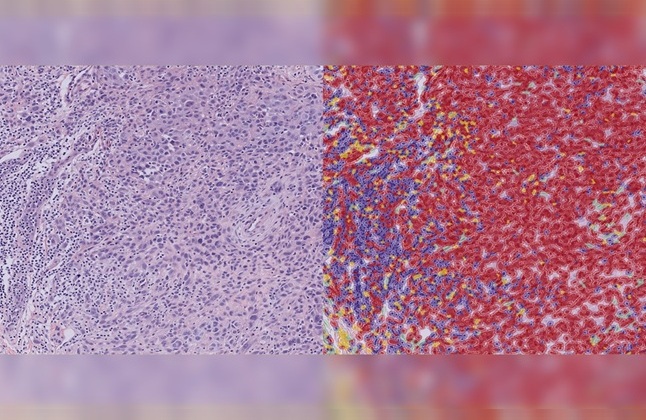AI-Based Scoring of Lymphocytes Outperforms Traditional Pathologist Eyeballing
Posted on 22 Jul 2025
Melanoma is a type of skin cancer where tracking tumor-infiltrating lymphocytes plays a critical role in assessing the body’s immune response and predicting patient outcomes. Traditionally, pathologists evaluate these immune cells visually under a microscope—a process known as "eyeballing" which is subjective and prone to variability. This lack of standardization can affect the accuracy of diagnoses and treatment decisions. As more tumor-infiltrating lymphocytes are linked with better patient outcomes, ensuring reliable assessments is crucial for guiding clinical care. Now, researchers have tested a new artificial intelligence (AI)-based method that provides a more consistent and reproducible approach to lymphocyte quantification, significantly outperforming conventional visual assessment.
In a study involving 45 institutions globally, researchers at Yale School of Medicine (New Haven, CT, USA) and Karolinska Institute (Stockholm, Sweden) led the development of an open-source AI tool designed to quantify tumor-infiltrating lymphocytes in melanoma tissue. The research team used a dataset of 60 melanoma samples, with 98 participants performing quantification. Of these, 40 were pathologists using traditional visual scoring, while 11 pathologists and 47 non-pathologist scientists used the AI tool. This open-source algorithm processes digitized pathology images and automates lymphocyte counting, reducing variability and offering a standardized method suitable for integration into clinical workflows.

In the study, published in JAMA Network Open, the AI tool showed superior reproducibility compared to traditional methods. The results confirm that AI-based quantification offers a robust, reliable alternative for assessing tumor-infiltrating lymphocytes. Although the retrospective design limits immediate clinical application, the publicly available dataset and algorithm provide a strong foundation for further validation. Researchers plan to continue refining the tool and integrating it into routine melanoma management, ultimately enhancing diagnostic accuracy and treatment personalization.
"Our findings suggest that an AI-driven lymphocyte quantification tool may provide consistent, reliable assessments with a strong potential for clinical use, offering a robust alternative to traditional methods," said Thazin Nwe Aung, PhD, lead author of the study.
Related Links:
Yale School of Medicine
Karolinska Institute




 assay.jpg)




 Analyzer.jpg)




